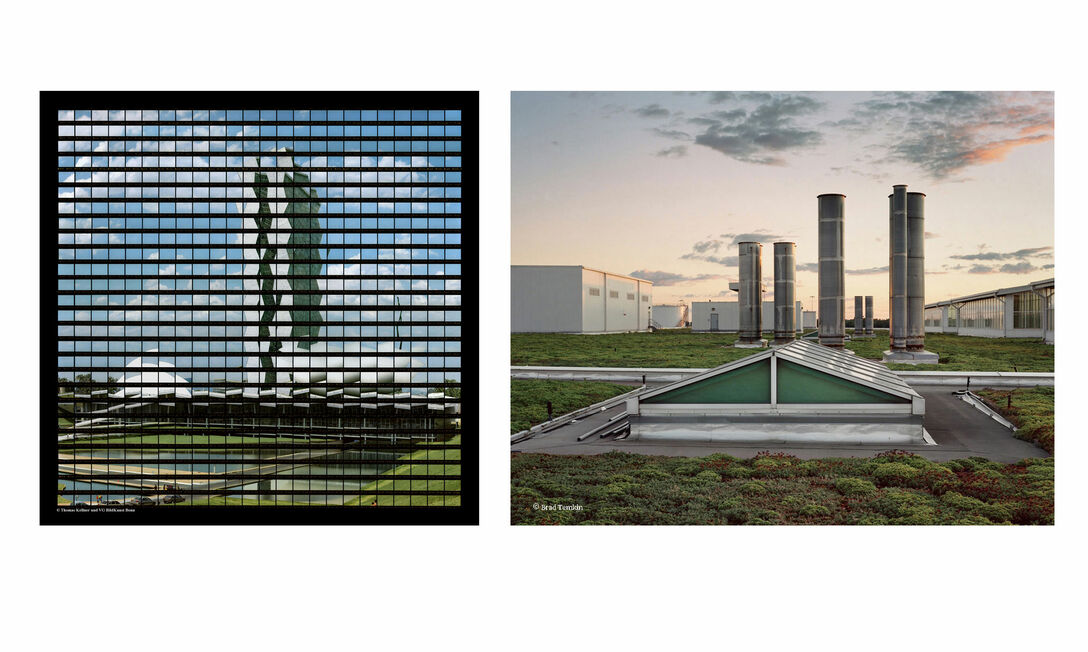Dialog - a bridge to the unknown
Washington, D.C. The “Building Dialogs” exhibition shows a composition by four international artists, in which photo artist Thomas Kellner is represented. The art exhibition is curated by Gesche Wuerfel, Professor of Photography at the UNC, and Fabian Goncalves Borrega who works at the AMA Art Museum of the Americas in Washington, DC. The AMA is the oldest museum of Latin American and Caribbean arts in the United States. It deals with modern and contemporary art and focuses on topics such as cultural exchange, democracy, human rights, security and development.
The exhibition presents parallels within the art works that deal with the built environment and connect the three pachas of the Inca culture. To this day the Inca is still part of the myth and religion of the Andes. The different levels (pachas) reflect the upper world, underworld and the middle world, the human realm of the Inca religion. A diptych with the individual works of the artists was put together, creating a dialog. Kellner plays an important role in this exhibition by visualizing the human empire of the Inca with the pictures from his series Brasilia. The Kay Pacha region is based on the humane order, with the pursuit of freedom, progress, emotions, envy, greed, fear and chaos. Kellner's works deviate from the formal architecture and create a shape that accommodates the original building and contains pictorial comments. The large contact sheets remind us of rows of buildings in a city block of an imaginary city. The viewer gets lost in this invented but ordered area. The shift is similar to the brain activity when information is divided and processed, which in turn resembles the emotions that arise when known monuments are perceived for the first time ever.
Additionally, works with disembodied architecture by artist Alejandra Delgado Uría, who was born in Bolivia, are also included. As the name of her series already suggests, Fantasmagorias is about several negative images that are superimposed and blur the entire figurative discourse of the actual building. Her pictures show cholets that have been cut up in a certain way that they reflect the multi-layered life that hovers between material and spirit. Cholets are particular buildings in Bolivia that are characterized by their color and geometric design. They stand as a symbol for the realm of the body, lust, excessive alcohol consumption and gluttony.
To distinguish, the underworld, the so-called Uku Pacha realm can be compared to the European cellar in terms of architecture. The place that serves as a storage room or as a disposal of waste and burial bodies. Nowadays basements are spaces for essential activities like laundry, carpentry, and repairs. Activities that are the basis for the development and the beginning of a transformative conversation. This realm is created by artist Gesche Wuerfel. Basement Sanctuaries are images that represent a void. Wuerfel shows various rooms in which migrants rebuild their lives and leave their old conditions behind. In America, the basements are vivid rooms in which house keepers, most of whom have immigrated, settle down and take care of the owner’s desires.
The fourth representative artist is Brad Temkin, who lives in Chicago and is well known for his photographs on roofs and thus occupies the third level, the Hanan Pacha realm. The upper world, which resembles the area of the Inca gods and the definition of the Holy. Temkin’s Rooftop series shows gardens on roofs of high-rise buildings that are marked with no visible horizon. His photographs represent ambiguous gardens that are closer to gods and could also stand for the upper class in society. The highest point is the place which only the selected are allowed to access. The Incas see the mountains and their peaks as sacred and use them as areas for ritual sacrifices for the gods - because the profane nature is the act of worship and uniting both worlds.
The idea of the curators is to combine individual pictures of the artists and put them together as a new picture, creating a diptych. The connection to the Inca culture is created and the three Pacha realms are linked together. “Building Dialogs” creates a new original that just a few moments before was the unknown. This synthesis sets a symbol for a mixture in sympathy.
The aim of this exhibition is to create dialogs within the pictures, artists, curators and above all, the presentations. The online demonstration, which is operated on the internet, takes up different points of view of the respective artist. The digital art exhibition is presented on selected platforms. Kellner's perception of the dialogs can be viewed on his website.
Building Dialogs
AMA Art Museum of the Americas
201 18th Street, NW
Washington, DC 20006, USA
Telefon: +1 202-370-0149
E-Mail: aospinaj@oas.org
www.museum.oas.org
Artists in this exhibition: Alejandra Delgado Uría, Thomas Kellner, Brad Temkin, Gesche Würfel









